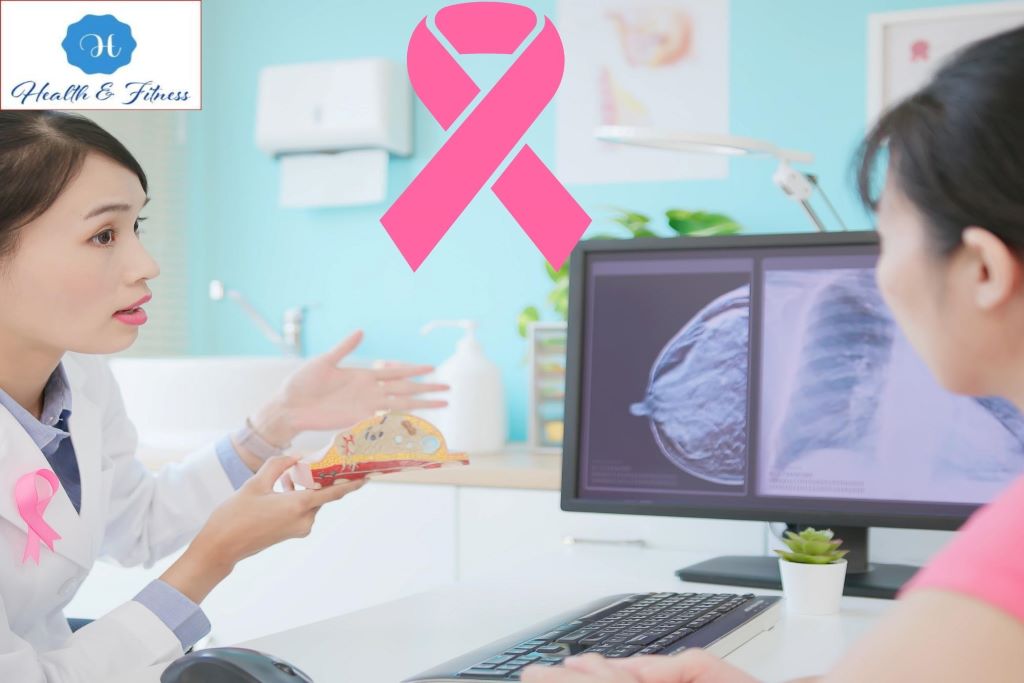Breast cancer is a life-changing disease that affects millions of women and men around the world every year. But the good news is that when breast cancer is detected early, it’s much easier to treat, and survival rates are significantly higher. Early detection is crucial as it can be lifesaving.
In this guide, I’ll offer five easy tips for early detection. These steps are sincere, and I’ll use real-life lifestyle examples and recommendations to illustrate their importance. Whether doing this for yourself or assisting someone else, it is a proactive approach to retaining fitness.
Why is the Early Detection of Breast Cancer Vital?
Catching a mammary tumour early makes treatment easier and more effective. It prevents the spread of the disease and reduces the need for aggressive treatments. A friend’s early detection via a routine mammogram led to simple treatment, and she’s now cancer-free. Her experience highlights the critical role of early detection.
Here are five tips to stay proactive about your breast health.
1. Know Your Risk Factors
Recognizing your risk factors for breast cancer is a crucial initial step. Certain factors, like genetics, family history, and lifestyle, can increase your chances of developing the disease.
Here are some risk factors to consider:
- Family history: If your mother, sister, or grandmother had breast cancer, you might be at higher risk.
- Genetic mutations: Certain gene mutations, like BRCA1 and BRCA2, significantly increase breast cancer risk. Genetic testing can help identify these mutations.
- Age: Most cases of breast neoplasm are diagnosed in women over the age of 50.
- Dense breast tissue: This can make identifying cancer on a mammogram more challenging.
- Lifestyle choices: Smoking, heavy alcohol use, and lack of exercise can all increase your risk.
If you’re at a higher risk, your doctor might recommend starting screenings earlier or using more advanced techniques like breast MRI. Knowing your risks helps you and your doctor create a personalized plan for prevention and detection.
2. Perform Monthly Breast Self-Exams
One of the simplest and most effective ways to monitor your breast health is by doing a breast self-exam every month. This entails checking your breasts for any unusual changes, such as lumps, thickening, or modifications in length or texture.
Here’s how to do it:
- Stand in front of a mirror and look for any visible changes in your breasts, such as swelling, redness, or dimpling of the skin.
- Raise your arms and check for the same signs.
- Use the pads of your fingers to feel your breasts in a circular motion. Ensure to cover the entire breast area, including your underarms.
- Repeat the process lying down for a more thorough exam.
I like this method because it’s something you can do at home, anytime. It’s free and empowers you to take control of your breast health. If you notice any changes, don’t panic—most lumps are not cancerous—but schedule a visit with your doctor to get it checked out.
3. Get Regular Mammograms
A mammogram screening is one of the most reliable ways to detect breast cancer
Early. A mammogram is an X-ray of the breast, and it can find cancer before you feel any symptoms.
Here’s what you need to know:
- Women who are 40 years and above should get a mammogram every 1-2 years.
- If you have a higher risk because of family history or other factors, your doctor may recommend starting screenings earlier.
- Mammograms can detect cancer at very early stages when it’s easier to treat.
I know mammograms can feel a bit uncomfortable, but they are quick and worth it. I’ve heard so much early detection success stories from women who caught their cancer early through a mammogram. This simple action might just save your life.
If you’re behind on your mammogram, make an appointment today. It’s a simple but powerful tool in the fight against breast cancer.
4. Pay Attention to Warning Signs
While Breast neoplasm often has no symptoms in its early stages, there are some early signs of mammary carcinoma you can watch for. Attention to these changes can help you act quickly if something feels off.
Here are the most common warning signs:
- A lump or area of thickening in the breast or underarm.
- Swelling, redness, or alterations in breast skin texture.
- Unexplained discomfort in the breast or nipple.
- Nipple changes, including discharge or inversion.
- Changes in the breast’s size or shape.
If you observe any of these symptoms, don’t dismiss them. Consult your doctor promptly. It’s wiser to get checked and discover its nothing serious than to delay and overlook something significant.
5. Make Healthy Lifestyle Choices
While you can’t control all your risk factors, living a healthy lifestyle can reduce your chances of developing breast cancer. Minor daily decisions can have a significant impact.
Prevention Tips for Breast Cancer
Maintain a Healthy Weight
Excess weight or obesity, particularly post-menopause, is a major risk factor for breast cancer.. Fat tissue produces estrogen, and having too much estrogen in the body can increase the risk of certain types of breast cancer.
How to Maintain a Healthy Weight:
- Maintain a balanced diet filled with vegetables, fruits, whole grains, and lean proteins.
- Limit processed foods, sugary snacks, and high-calorie drinks.
- Keep track of portion sizes to avoid overeating.
- Incorporate regular exercise into your routine (details provided further down).
Why it matters: Studies show that women who maintain a healthy weight have a lower risk of developing breast cancer, particularly after menopause.
Stay Physically Active
Consistent physical activity is among the most effective methods to reduce your risk of breast cancer.
Exercise helps regulate hormones, improves immune system function, and reduces inflammation, all of which play a role in cancer prevention.
Recommendations:
- Aim to engage in 30 minutes of moderate physical activity on the majority of days each week.
- Activities like brisk walking, cycling, dancing, or swimming are great options.
- Include strength training (e.g., weightlifting) at least twice a week to build muscle and maintain a healthy metabolism.
Why it matters: Physically active women have a 10-20% lower risk of developing breast adenocarcinoma compared to those who are inactive.
Eat a Nutrient-Rich Diet
Your diet plays a crucial role in reducing breast cancer risk. While no single food can prevent cancer, certain foods have been shown to support a healthy immune system and help fight inflammation.
Foods to Include:
- Fruits and Vegetables: Particularly those high in antioxidants, like berries, citrus fruits, spinach, and broccoli.
- Whole Grains: Fiber-rich options include brown rice, quinoa, oats, and whole wheat bread.
- Healthy Fats: Incorporate foods such as avocados, nuts, seeds, and olive oil.
- Lean Proteins: Fish, chicken, tofu, and legumes are better options than red or processed meats.
- Cruciferous Vegetables: broccoli, cauliflower, kale, and Brussels sprouts contain compounds that may help reduce cancer risk.
Foods to Avoid:
- Limit consumption of processed foods, fried foods, and sugary snacks.
- Avoid charred or overcooked meats, as they contain harmful chemicals linked to cancer.
Why it matters: A nutrient-rich diet supports your body’s natural defences against cancer, improves hormone regulation, and promotes overall health.
Don’t Smoke
Smoking is linked to multiple cancers, including breast cancer. Chemicals in tobacco can damage DNA and cause oxidative stress, both of which increase cancer risk.
How to Quit Smoking:
- Seeking support from smoking cessation programs or counsellors.
- Use nicotine replacement therapies like gum or patches.
- Avoid environments where you’re tempted to smoke.
Why it matters: Smoking increases breast cancer risk, particularly in premenopausal women. Quitting smoking also lowers the risk of other cancers and heart disease.
Limit Hormone Therapy
Hormone replacement therapy (HRT), especially when taken for long periods, can increase the risk of Breast tissue cancer. This includes both estrogen-progestin therapy and therapy that uses estrogen alone.
What to Do:
- If you’re considering HRT for menopausal symptoms, talk to your doctor about safer alternatives.
- Administer the smallest effective dose for the briefest duration possible.
- Explore natural remedies for menopause, such as herbal supplements, yoga, or acupuncture.
Why it matters: Limiting or avoiding hormone therapy can significantly reduce mammary cancer risk, especially in older women.
Breastfeed, If Possible
Research shows that breastfeeding lowers the risk of breast cancer, with extended periods offering greater protection. This may be because breastfeeding reduces a woman’s lifetime exposure to estrogen and helps shed breast tissue, which can remove cells with potential DNA damage.
Tips for Breastfeeding:
- Strive for exclusive breastfeeding during the initial six months.
- Continue breastfeeding as long as it feels right for you and your baby.
Why it matters: Breastfeeding not only benefits the baby’s health but also reduces a mother’s risk of developing breast cancer.
Know Your Family History and Consider Genetic Testing
If you have a strong family history of breast cancer or other cancers, you may carry genetic mutations like BRCA1 or BRCA2 that increase your risk.
What You Can Do:
- Discuss your family’s cancer history with your doctor.
- Consider genetic testing to assess your risk.
- If you test positive for high-risk mutations, discuss preventive options, such as increased screening or preventive surgery.
Why it matters: Knowing your genetic risk allows you to take proactive steps to reduce it, such as earlier or more frequent screenings.
Stay on Top of Screenings
Routine screenings play a fundamental role in the prevention of breast cancer. While they don’t prevent the disease, they can catch it early, when it’s most treatable.
Screening Guidelines:
- • Mammograms: Women 40 and older should schedule a mammogram every 1-2 years. Individuals with elevated risk factors might start screenings earlier.
- Clinical Breast Exams: Have your doctor check your breasts during your routine check-up.
- Breast Self-Exams: Although they cannot replace medical screenings, conducting monthly self-exams can aid in the early detection of changes.
Why it matters: Early detection of breast cancer increases the chances of successful treatment and long-term survival.
Reduce Exposure to Environmental Toxins
Certain chemicals in the environment can disrupt hormones or damage DNA, increasing the risk of breast cancer. This category includes substances like pesticides, plastics, and specific cleaning products used at home.
Tips for Reducing Exposure:
- Use natural or eco-friendly cleaning products.
- Refrain from using plastic containers or plastic wrap to store your food.
- Select organic produce whenever feasible to minimize pesticide exposure.
- Filter your drinking water to remove harmful contaminants.
Why it matters: Reducing exposure to harmful chemicals helps lower your overall cancer risk and promotes better health.
Frequently Asked Questions About
What is the major cause of breast cancer?
It occurs when breast cells grow irregularly and uncontrollably. While the exact cause isn’t always clear, several factors increase the risk, including genetics, hormone levels, and lifestyle choices. Breast cancer research continues to look for answers, but it’s important to focus on what you can control, like regular screenings and healthy habits.
Can I live 20 years after breast cancer?
Yes! Many people live long, healthy lives after a mammary cancer diagnosis. Smoking is associated with various forms of cancer, breast cancer being one of them. For example, the 5-year survival rate for stage 1 Mammary cancer is over 90%. With advances in breast cancer treatment, living 20 years or more after diagnosis is very common.
What are the top five warning indicators of breast cancer?
The five most common warning signs are:
- A lump in the breast or underarm.
- Swelling or thickening of the breast.
- Skin changes, such as redness or dimpling.
- Nipple changes, like discharge or inversion.
- Persistent breast or nipple pain.
If you notice any of these symptoms, visit your doctor right away.
Is stage 1 breast cancer curable?
Yes, stage 1 breast cancer is highly curable. In this phase, cancer remains small and has not metastasized to other areas of the body. Treatments like surgery, radiation, and sometimes hormone therapy can successfully remove or destroy cancer. Early detection is key to curing stage 1 breast cancer.
Final Thoughts
It is a serious disease, but early detection gives you the best chance of beating it. By understanding your risks, performing breast self-exams, getting regular mammograms, and making healthy choices, you can take control of your health.
I hope this guide inspires you to act, whether it’s scheduling your next screening or encouraging a loved one to do the same. Breast cancer awareness is powerful—it saves lives. Spread the word by sharing this article with your friends and family.
Remember, for mammary cancer, knowledge is power, and early detection can make all the difference. Remain proactive, maintain your health, and take care of yourself!



